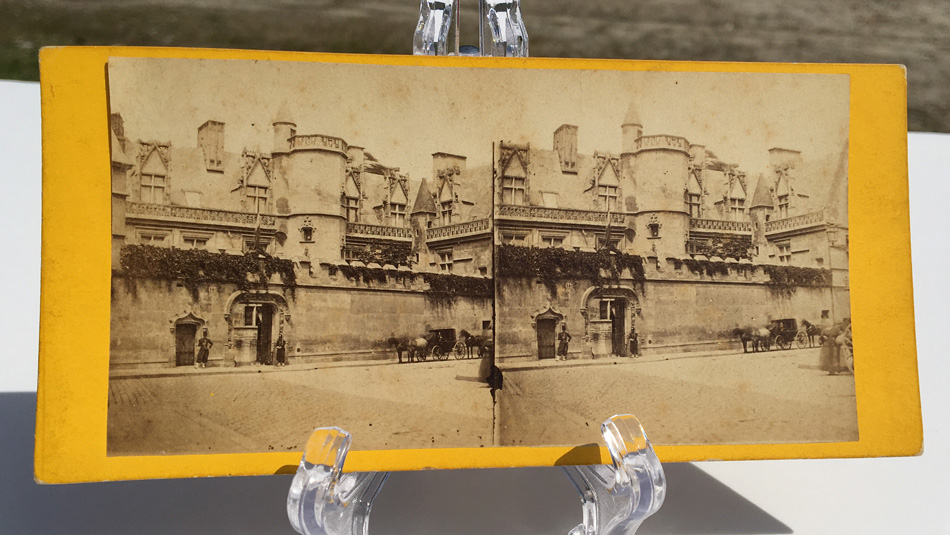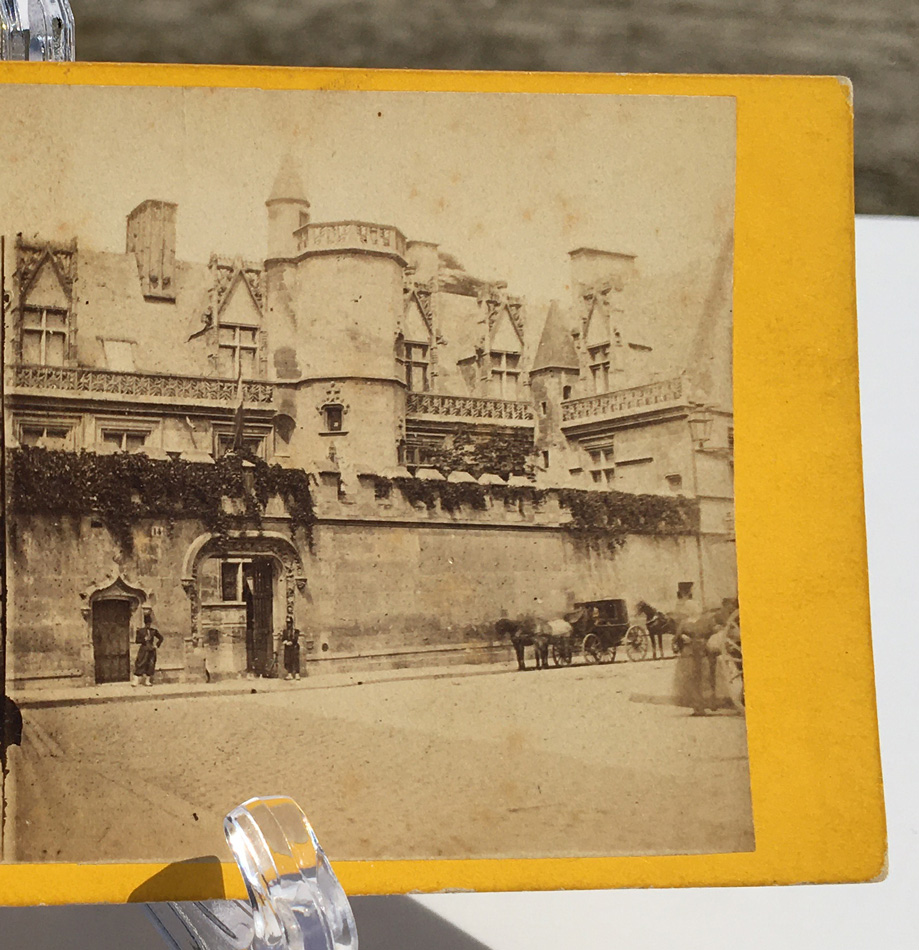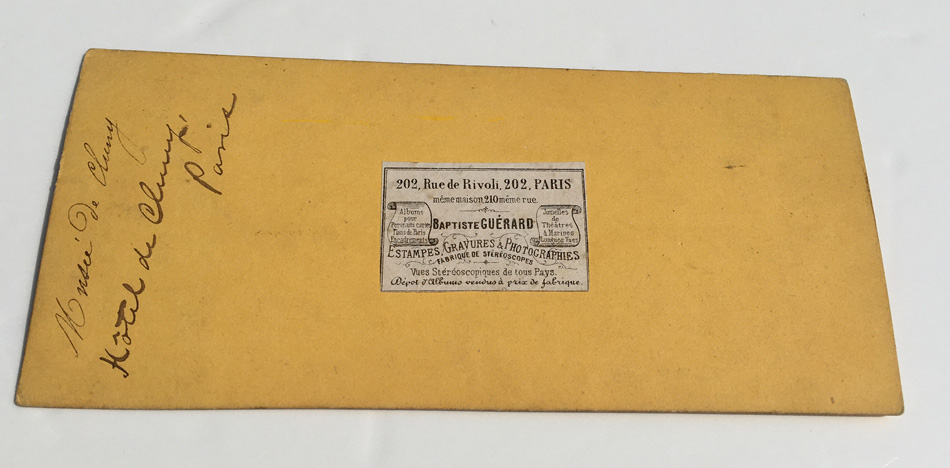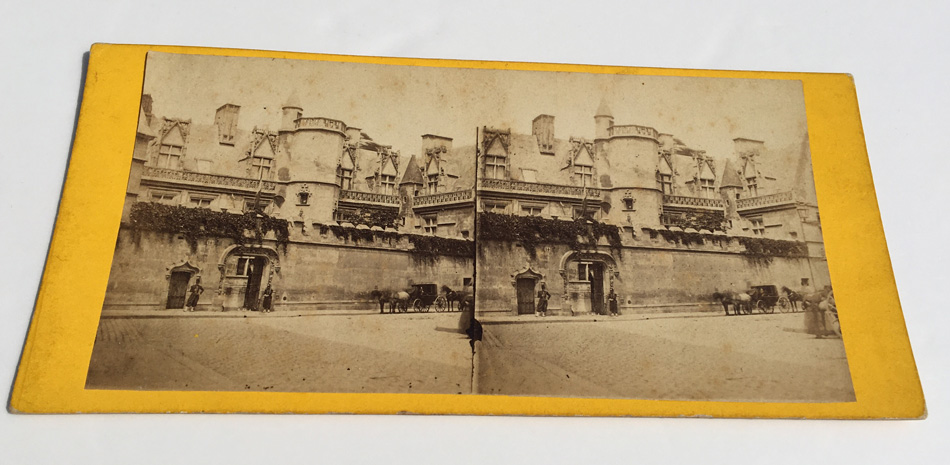- MUSEE De CLUNY - HOTEL De CLUNY, PARIS, not mentioned in title France.
Photographs throughout Ad:
Offered for auction from a recent Estate sale is the following
Below I have listed the title of the stereoview as read from original old handwritting on the back along with information on the Cluny Thermal Baths and Hotel which could be another title for the scene.




The Hôtel de Cluny is partially constructed on the remnants of the third century Gallo-Roman baths known as the Thermes de Cluny, thermal baths from the Roman era of Gaul. The museum consists of two buildings: the frigidarium ("cooling room"), within the vestiges of the Thermes de Cluny, and the Hôtel de Cluny itself, which houses its collections. The frigidarium is about 6,000 square meters.
The museum houses a vast collection of objects and art from the Middle Ages. Among the principal holdings of the museum are the six tapestries of The Lady and the Unicorn (La Dame à la licorne).
The building itself is a rare extant example of the civic architecture of medieval Paris. It was formerly the town house (hôtel) of the abbots of Cluny. The first Cluny hôtel was built after the Cluny order acquired the Ancient thermal baths in 1340. It was built by Pierre de Chaslus. The structure was rebuilt by Jacques d'Amboise, abbot in commendam of Cluny 1485–1510; it combines Gothic and Renaissance elements. In 1843, it was refashioned into a public museum by Alexandre du Sommerard to preserve relics of France's Gothic past.
Though it no longer possesses anything originally connected with the abbey of Cluny, the hôtel was at first part of a larger Cluniac complex that also included a building (no longer standing) for a religious college in the Place de la Sorbonne, just south of the present day Hôtel de Cluny along Boulevard Saint-Michel. Although originally intended for the use of the Cluny abbots, the residence was taken over by Jacques d'Amboise, Bishop of Clermont and Abbot of Jumièges, and rebuilt to its present form in the period of 1485–1500. Occupants of the house over the years have included Mary Tudor, the sister of Henry VIII of England. She resided here in 1515 after the death of her husband Louis XII, whose successor, Francis I, kept her under surveillance, particularly to see if she was pregnant. Seventeenth-century occupants included several papal nuncios, including Mazarin.
In the 18th century, the tower of the Hôtel de Cluny was used as an observatory by the astronomer Charles Messier who, in 1771, published his observations in the landmark Messier catalog. In 1789, during the early years of the French Revolution, the hôtel was confiscated by the state, and for the next three decades served varying functions. At one point, it was owned by a physician who used the magnificent Flamboyant chapel on the first floor as a dissection room. The hôtel also housed the printing press of Nicolas-Léger Moutard, the official printer of the Queen of France from 1774 to 1792. His printing press was located in the hôtel's chapel.
I will accept PAYPAL and other Ebay payment methods. Items will be shipped first class mail usually next day after payment of Paypal, packaging and mail $3.45. I will combine shipping 1 to 3 views $3.45, 3 to 6 views $5.35 and over 6 no additional postage or shipping charge.
I will ship internationally, payment must be in US funds, Paypal. I will ship world wide International first Class Mail 1 stereoview for $12.47 and will combine ship.